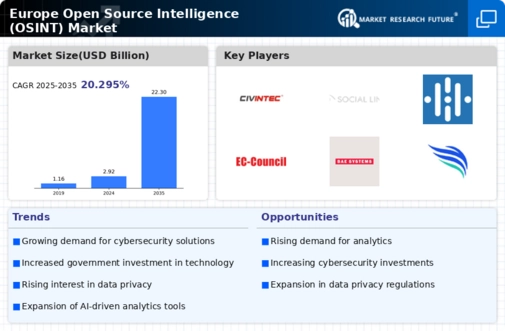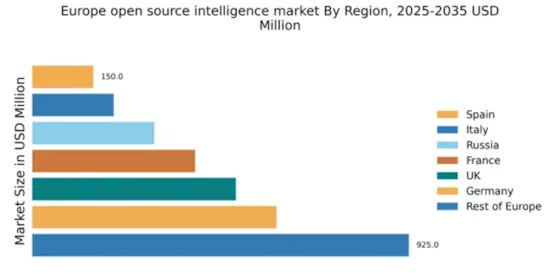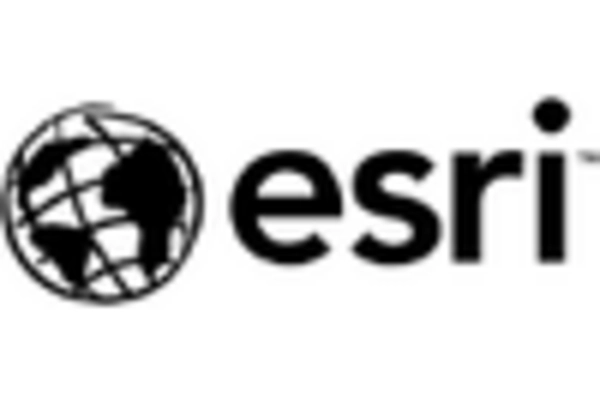Europe Open Source Intelligence Market Summary
As per MRFR analysis, the open source-intelligence market Size was estimated at 2075.0 USD Million in 2024. The Europe open source-intelligence market is projected to grow from 2533.78 USD Million in 2025 to 18684.0 USD Million by 2035, exhibiting a compound annual growth rate (CAGR) of 22.11% during the forecast period 2025 - 2035.
Key Market Trends & Highlights
The Europe open source-intelligence market is experiencing robust growth driven by technological advancements and regulatory demands.
- Germany remains the largest market for open source-intelligence solutions, reflecting a strong emphasis on data security and compliance.
- The UK is emerging as the fastest-growing region, with increasing investments in AI technologies and data analytics.
- There is a notable trend towards collaboration among stakeholders, enhancing the effectiveness of open source-intelligence initiatives.
- Rising demand for cybersecurity solutions and government initiatives are key drivers propelling market expansion across Europe.
Market Size & Forecast
| 2024 Market Size | 2075.0 (USD Million) |
| 2035 Market Size | 18684.0 (USD Million) |
| CAGR (2025 - 2035) | 22.11% |
Major Players
Palantir Technologies (US), IBM (US), Bae Systems (GB), Thales Group (FR), Esri (US), Recorded Future (US), OpenText (CA), CybSafe (GB)


















Leave a Comment